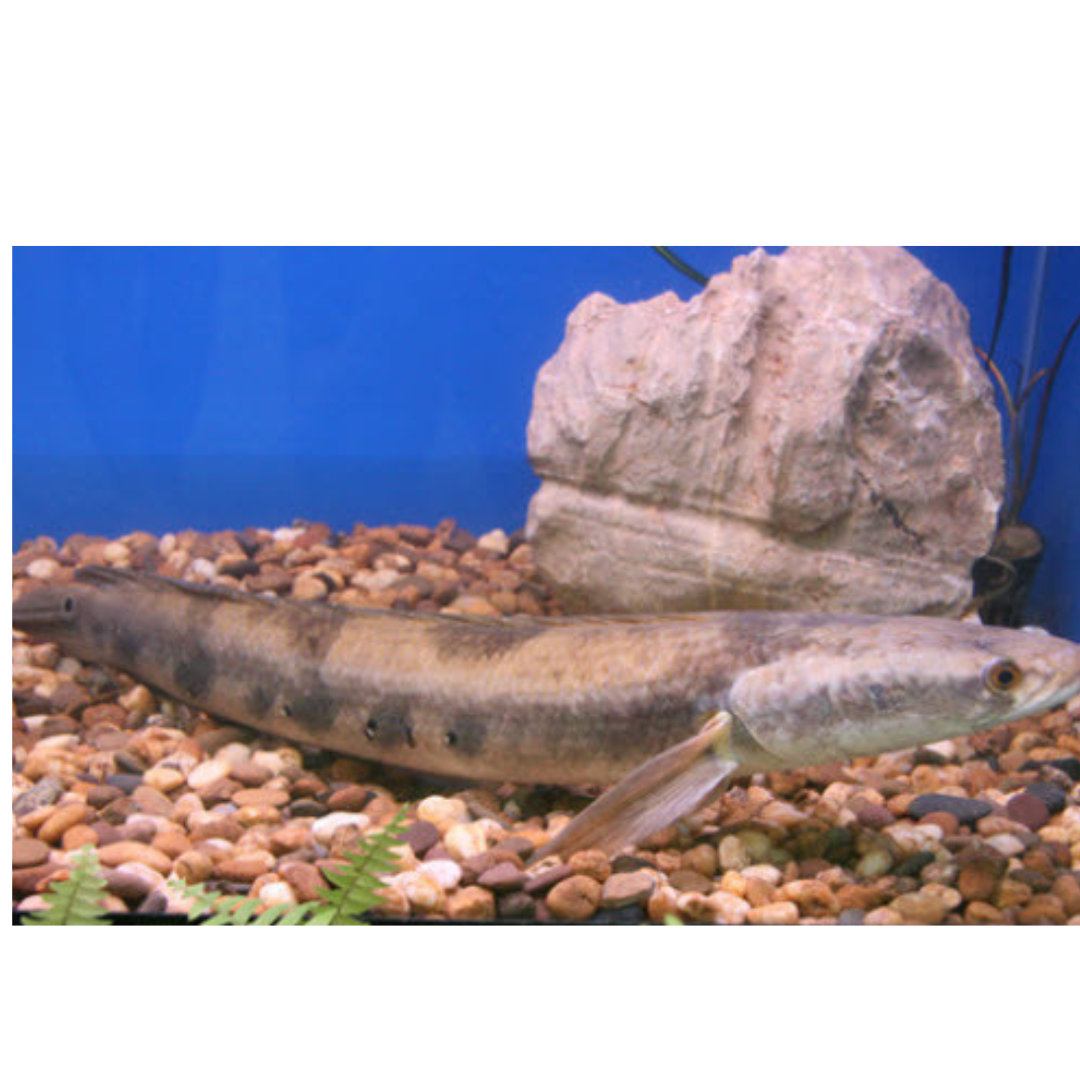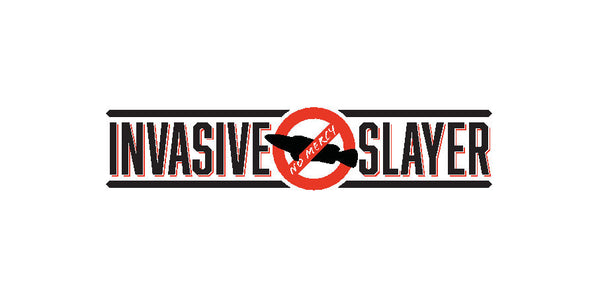
Bullseye Snakehead
Share
The Bullseye Snakehead (Channa marulius) is a striking and invasive fish species that has captured the interest of anglers and conservationists. Originating from Southeast Asia, this predatory fish has made its way into various water bodies across the United States, particularly in Florida, posing ecological challenges.
Identification
Bullseye Snakeheads are named for the distinctive orange or red spot, resembling a bullseye, located near their tail fin. They have elongated bodies, large mouths with sharp teeth, and can grow up to 3.5 feet in length and weigh over 20 pounds. Their coloration typically features dark brown or black hues with a mottled pattern.
Habitat and Behavior
These adaptable fish prefer warm, slow-moving freshwater habitats such as canals, ponds, and marshes. Like other snakehead species, Bullseye Snakeheads possess a labyrinth organ, allowing them to breathe air and survive in low-oxygen environments. This adaptation enables them to thrive in a variety of conditions and outcompete native fish species.
Ecological Impact
The presence of Bullseye Snakeheads in non-native waters poses significant ecological risks. Their aggressive feeding habits disrupt local ecosystems, preying on a wide range of aquatic species, including fish, crustaceans, and amphibians. This predation can lead to a decline in native fish populations and overall biodiversity.
Fishing for Bullseye Snakehead
Anglers find Bullseye Snakeheads to be a challenging and rewarding catch due to their powerful fight and elusive nature. Popular lures for targeting Bullseye Snakehead include topwater frogs, spinnerbaits, and soft plastic baits. The best times to fish for them are typically during early morning or late afternoon when they are most active.
Controlling the Invasion
Controlling the spread of Bullseye Snakeheads involves public awareness, monitoring, and active management. Anglers are urged to report sightings to local wildlife authorities and avoid releasing captured snakeheads back into the wild. Some regions have implemented targeted fishing tournaments and removal programs to help manage their populations.
Conclusion
Understanding the characteristics, habitat preferences, and ecological impact of the Bullseye Snakehead is crucial for managing this invasive species. Through responsible fishing practices and increased awareness, we can help mitigate the adverse effects of Bullseye Snakeheads on our local ecosystems.
